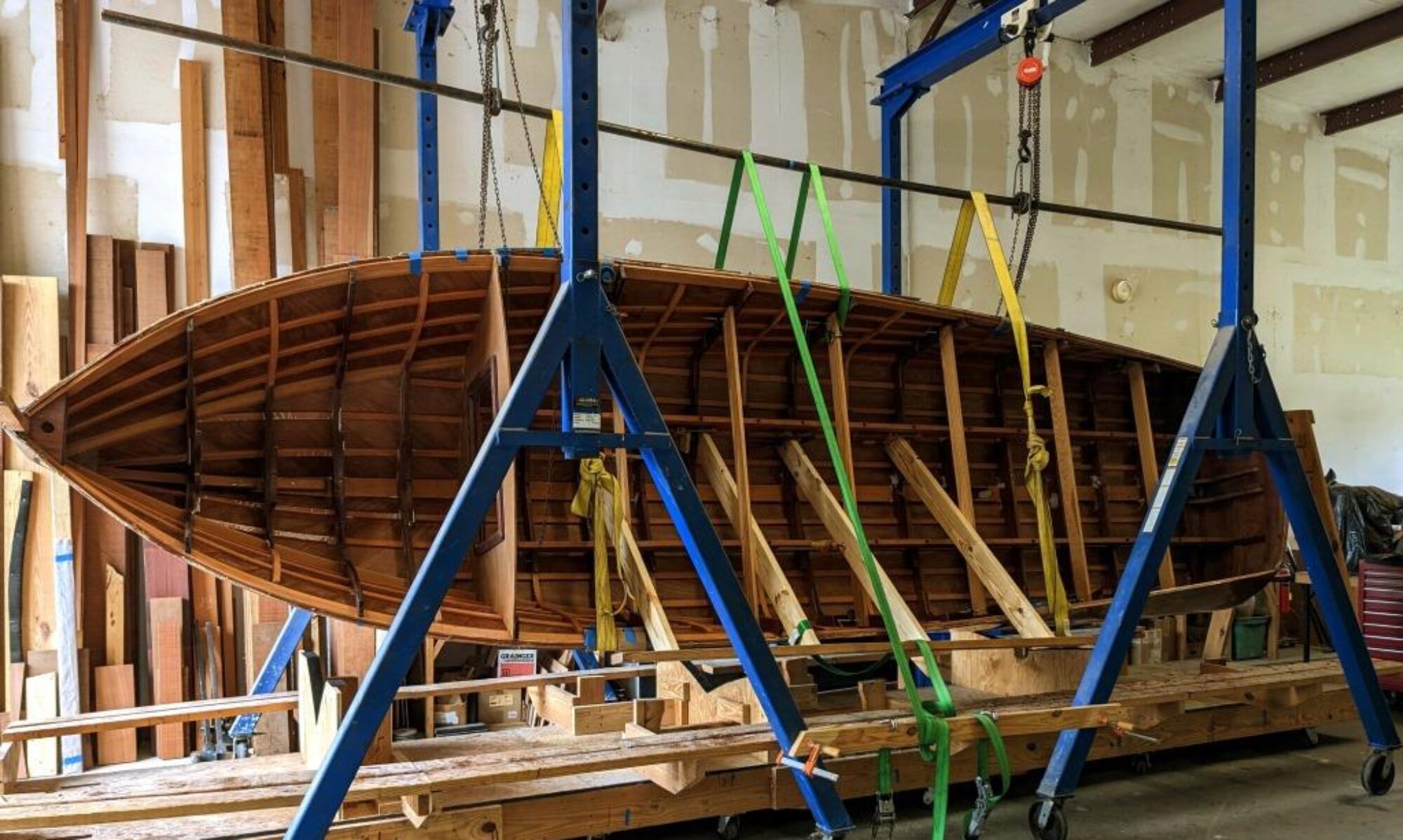
In my last post I discussed the importance of the hull-deck joint and how I repaired it on the Key West 1900 center console currently in my shop. Now that the structural repair has been accomplished, let’s talk about cosmetics. After all, we want the boat to look pretty again. Our goal is not just good-as-new structurally, but cosmetically as well!

As you can see, quite a bit of excavation and filling was required to get rid of all the stressed and cracked fiberglass. Now we have to cover that in gelcoat, the same material that was used in manufacturing the boat originally. The trick is to get a good color match. After 20 years, even if we had a batch of gelcoat from the original manufacturing run, it wouldn’t match the color of the boat now due to the fading effects of the intense sun here in South Carolina. So you have to blend your own color.

Having done that, I just layered on coat after coat until it was a little bit proud of the surrounding area, knowing that I would have to sand it smooth. In this case, it was worth it to construct a plywood dam that recreated the curve I wanted in order to define the sheer line (the line of the deck you see as you look at it from the side). With the dam in place, I could load it up with gelcoat and scrape it off even with the top of the dam.

Next comes the process of sculpting the gelcoat to the final shape. You have to take your time, being careful not to sand off too much. Of course if you do, you can always add another layer. But you have to wait a day for it to cure. Finally, polishing to a nice shine, and a coat of wax completes the repair. Good as new in all respects!


